Jalgaon village. Buldhana. Vidarbha.
“Now at least I can sleep in the night. I no more have to rush to my field past mid-night to switch on the motor of water pump for irrigation,” a relieved Avinash Nagre told Gaon Connection. Nagre, secretary of Jalgaon gram panchayat in Buldhana district of Maharashtra, save Rs 1,000 per month on electricity bill as he has replaced his conventional electric water pump with a solar pump. “Solar water pump saves me Rs 12,000 a year,” he added.
Adoption of solar-powered agricultural pump has brought relief to Nagre and 44 other farmers in his village, as they no more have to depend on the erratic power supply of the state electricity board. Solar panels attached with the agricultural pumpsets ensure there is ‘free’ power during the day time to operate the motor of pump. Over 103 more farmers in Nagre’s village have approached the district authorities for installation of solar pumps in their fields.
“Just two years ago, we didn’t know what it was to sleep through the night. The electricity board used to supply power barely for two hours past midnight,” reminisced Nagre standing in his field of recently planted Bt cotton kharif crop about 550-km from the state capital Mumbai. “We had no option, but to rush to our fields at odd hours to switch on the motor of water pumps to irrigate our fields [using groundwater],” he added.
Adoption of solar-powered agricultural pumps, being promoted under the Union ministry of new and renewable energy’s KUSUM [Kisan Urja Suraksha evam Utthaan Mahabhiyan] scheme, has undoubtedly brought relief to farmers.
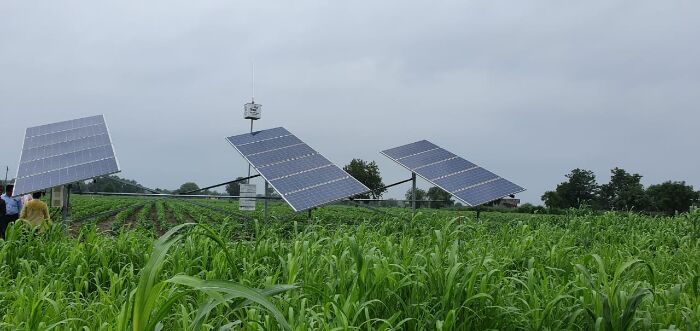 45 farmers in Jalgaon village in Buldhana district of Maharashtra have installed off-grid solar agricultural pumpets. Pic: Nidhi Jamwal
45 farmers in Jalgaon village in Buldhana district of Maharashtra have installed off-grid solar agricultural pumpets. Pic: Nidhi Jamwal
“Not just farming, even fetching drinking water has become easy for women, as any time of the day we can go to dug-well, press a button and water comes out,” Rajashri Wagh, sarpanch of Jalgaon village told Gaon Connection.
But, in spite of a huge investment (a 5-horsepower solar water pump system costs over Rs 3.5 lakh) and 90 per cent subsidy by the Centre, these off-grid solar power systems remain idle for almost half a year as groundwater levels fall sharply during the summer months.
“In Marathwada and Vidarbha regions of Maharashtra, droughts are common. During the summer months, our wells dry up,” informed Kailash Wighole, a resident of Jalgaon village in Buldhana. “This year, for almost four to five months, my dug-well was dry. Whenever little water appeared, we used it for drinking and cooking purposes. I could not do any rabi [winter] crop… Now, with the arrival of monsoon, I have sown kharif crop of Bt cotton and soybean on my five acre farmland,” he added.
 Farmers in Jalgaon village, Buldhana have sown kharif crop of Bt cotton after a delay of more than a month due to late arrival of monsoon. Their dug-wells were dry for 4-5 months due to acute drought. Pic: Nidhi Jamwal
Farmers in Jalgaon village, Buldhana have sown kharif crop of Bt cotton after a delay of more than a month due to late arrival of monsoon. Their dug-wells were dry for 4-5 months due to acute drought. Pic: Nidhi Jamwal
This issue of under-utilisation of off-grid solar water pumping systems is highlighted in a recent report — ‘Silver Bullet: Are solar pumps a panacea for irrigation, farmer distress and discom losses?‘ of New Delhi-based think-tank Centre for Science and Environment (CSE). Among other things, the report analyses the KUSUM scheme, its impact on groundwater resources and ‘solarisation’ of the grid.
“A solar panel can operate for 1,800 hours to 2,000 hours in a year to generate electricity. But, at present these panels of off-grid solar-powered agricultural pumps are utilised for only one-third of the time,” said Chandra Bhushan, deputy director general of CSE while releasing the report at Aurangabad in Maharashtra. “There is also a threat of unsustainable extraction of groundwater due to ‘free’ solar power. These concerns need to be discussed and debated,” he added.
According to Bhushan, the clean energy programme of KUSUM can become a ‘green’ energy programme if a strong component of water conservation is included in it.
KUSUM scheme
India has committed to increasing the share of installed capacity of electric power from non-fossil-fuel sources to 40 per cent by 2030. The Cabinet has approved scaling-up of solar power target from 20,000 mega watt (MW) of grid connected solar power projects to 100,000 MW by 2022.
While large scale solar power generation projects are being installed to achieve this target, the Indian government is also promoting decentralised solar energy projects. Irrigation pumps, which run on diesel or conventional electricity, are being replaced with solar water pumps.
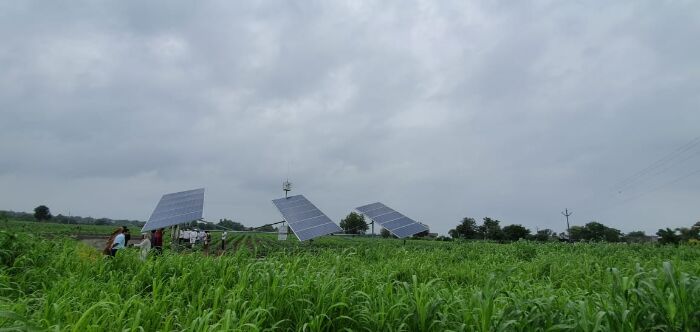
Thanks to the off-grid solar-powered agricultural pumps, farmers no more have to depend on the erratic power supply of the state electricity board. Pic: Nidhi Jamwal
According to the Union ministry of new and renewable energy (MNRE), over 30 million agricultural pumps are installed in India of which nearly 10 million pumps are diesel based. The distribution companies, or DISCOMs, are not in a position to energize these pumps through grid connection. Also, over 20 million grid-connected agriculture water pumps consume more than 17 per cent of the total annual electricity consumed in the country.
“It is estimated that in India electricity subsidy for agriculture [cheap or free electricity to farmers] is about Rs 50,000 crore a year. States like Punjab and Haryana have an annual subsidy bill of Rs 6,000-7,000 crore,” said Bhushan. Central and state governments in India have been increasingly pitching for solar-powered agricultural pumps to simultaneously provide farmers with access to assured irrigation, while reducing the electricity subsidy burden, he added.
At present, there are about 0.24 million solar agriculture pumps installed in the country, which are largely in off-grid mode. The Central government has launched Pradhan Mantri Kisan Urja Suraksha Evam Utthan Mahabhiyan (PM KUSUM) scheme with a target of addition of 1.75 million off-grid pumps and one million on-grid pumps. In addition, the KUSUM scheme plans to instal 10 giga watt (GW; 1 GW = 1,000 MW) of small solar power plants on agricultural feeders.
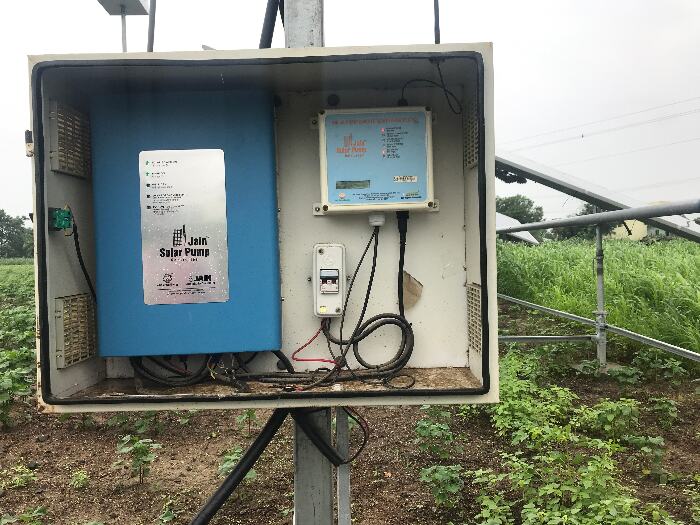 At present, there are about 0.24 million solar agriculture pumps installed in the country, which are largely in off-grid mode. Pic: Nidhi Jamwal
At present, there are about 0.24 million solar agriculture pumps installed in the country, which are largely in off-grid mode. Pic: Nidhi Jamwal
Through the KUSUM scheme, the government plans to add solar capacity of 25,750 MW by 2022 with the total central financial support of Rs 34,422 crore.
Both energy sector experts and agriculture sector experts support switching over of agricultural pump sets from diesel or conventional electricity to solar power.
“But, the way the scheme has been rolled out, off-grid solar power pumps remain idle for four to five months in a year as groundwater table is very low for extraction,” said Mandvi Singh, programme manager with renewable energy team of CSE and one of the authors of the recent report. “The second issue is the risk of over-extraction of groundwater as solar power is free power,” she added.
Solar is brightening up lives…
Kailash Wighole of Jalgaon village is an ingenious farmer. In 2017, when 45 farmers in his village decided to adopt off-grid solar-powered agricultural pumps, he was one of them.
“I had a diesel powered agricultural pumpset which used to cost me Rs 800-900 a day to pump groundwater into my five acre field. After switching over to a solar water pump, there is no recurring cost and solar power is free,” said Wighole.
He paid about Rs 35,000 [10 per cent of of the total cost of solar water pump, the rest shared by the Centre] as an upfront cost of installation of the solar pump in his field. There is no maintenance burden on him as maintenance of off-grid solar-powered agricultural pump is free for the initial five years period.
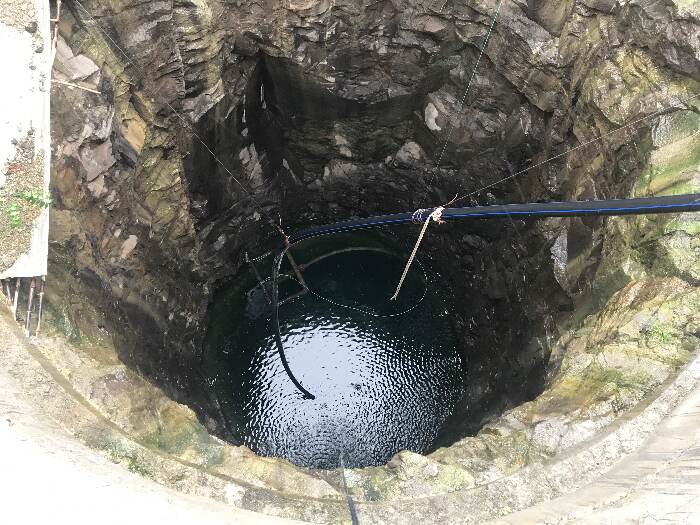 Kailash Wighole of Jalgaon village in Buldhana has laid a pipeline which brings water from his solar power pump operated dug-well to his doorstep. Pic: Nidhi Jamwal
Kailash Wighole of Jalgaon village in Buldhana has laid a pipeline which brings water from his solar power pump operated dug-well to his doorstep. Pic: Nidhi Jamwal
Unlike other farmers, Wighole didn’t stop at just installation of the solar water pump in his field. To ensure women in his family do not have to walk long distance to fetch water, he laid an underground pipeline — over 90 metres long — from the dug-well in his field, which is connected with the solar pump, till his doorstep. “It cost me an additional Rs 22,500 to lay the pipeline, but women in the family are happy,” said Wighole.
“Earlier I had to finish chores quickly and make multiple trips to fetch water,” said Meena Wighole, wife of Kailash Wighole. “Now, by just pressing a button, water is delivered at home, which I store in large plastic tanks. We also share this water for free with the old and needy people in the village,” she added.
… But solar panels remain idle in peak summer season
This year being an acute drought year, for almost four to five months of the summer season, the wells in Jalgaon village were dry. “We are facing recurring droughts for the last one decade and a large number of our water sources dry up in summer season,” said Nagre.
Since groundwater is not available, the off-grid solar powered agricultural pumps remain idle for large part of the year, especially during the summer season when the country receives peak solar heat.
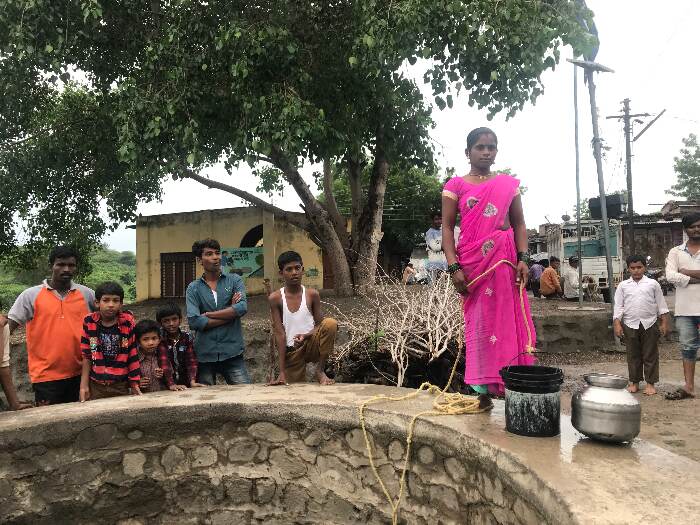 Farmers in Marathwada and Vidarbha complain that 4-5 months a year, their water sources go dry and they face acute water scarcity. Pic: Nidhi Jamwal
Farmers in Marathwada and Vidarbha complain that 4-5 months a year, their water sources go dry and they face acute water scarcity. Pic: Nidhi Jamwal
“This is a concern with off-grid solar water pumps because during the summer months, there is abundant solar heat to generate solar power. But, because the groundwater table falls sharply in summer, these solar panels remain idle,” said Abhishek Jain of Centre for Energy, Environment and Water (CEEW), New Delhi.
According to him, this problem can be addressed if solar power generated during the ‘idle’ months can be used by the local farmers for other agricultural activities such as processing of pulses or oilseeds. “This value addition can also help raise income of the farmers,” said Jain.
Another option is to feed the ‘excess’ power generated by the farmers into the grid against which farmers can earn money. But, for that, the solar water pumps need to be connected with the grid.
Convergence with water conservation
The CSE report has also flagged the risk of over-extraction of groundwater through solar-powered agricultural pumps because solar power is ‘free’ and the KUSUM scheme has no component of water conservation built into it.
“Clean energy does not always mean green solution. We have enough evidence from states like Punjab, Haryana and Tamil Nadu about the impact of highly subsidized electricity on groundwater withdrawal. Large-scale solar pump deployment without a comprehensive plan to monitor and control water usage would be equally disastrous,” warned Bhushan.
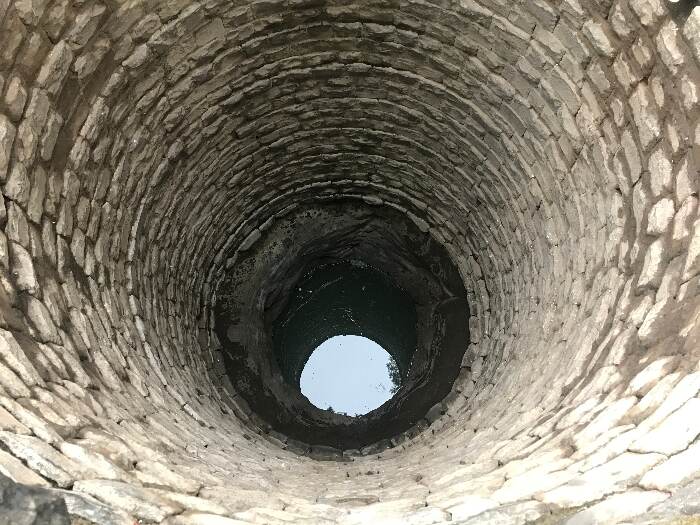 CSE report has also flagged the risk of over-extraction of groundwater through solar-powered agricultural pumps because solar power is ‘free’. Pic: Nidhi Jamwal
CSE report has also flagged the risk of over-extraction of groundwater through solar-powered agricultural pumps because solar power is ‘free’. Pic: Nidhi Jamwal
The other two models under the KUSUM scheme — solarisation of agricultural feeders and on-grid solar pumps — are economically superior to off-grid pumps since excess electricity can be injected into the grid, claimed CSE. However, none of these alternatives have specific measures or mandate to limit water use.
D K Singh, principal scientist and professor with Indian Agricultural Research Institute (IARI), New Delhi does not believe adoption of solar powered agricultural pumps will lead to over-extraction of groundwater.
“In India, the efficiency of groundwater irrigation is about 55-60 per cent. Through a project in Rasoolpurjatan village in Muzaffarpur district of Uttar Pradesh, we have shown that this efficiency can be increased to 75 per cent,” said Singh.
Between 2015-2018, a team of IARI scientists worked with the local farmers of Rasoolpurjatan and helped lay down underground pipes for irrigating the fields. Also, farmers were provided hydrant and valve to control groundwater use. “Our farmers are very intelligent and sensitive people. If guided and trained well, they can adopt any technology and make the best use of it,” said Singh.
There are some other concerns around solar water pumps that need to be addressed. “Under the KUSUM scheme, farmers have to pay an upfront cost of 10 per cent towards solar water pump, which is about Rs 35,000,” said H M Desarda, an economist and former member of the Maharastra State Planning Board. Small and marginal farmers take loan from private moneylenders and pay up to Rs 10,000 a year only as interest charges,” he added.
According to Bhushan, the solar pump programme needs a relook considering the large-scale land degradation, groundwater exploitation and farmers distress in the country. “It is very much possible to increase renewable energy, reduce groundwater exploitation and help small and marginal farmers. But for this, KUSUM scheme needs to go beyond just being a pumps scheme,” he said.
Also Read:Illumination of Study Tables Is Helping Hardoi Girls to Shine Brighter
Also Read: सौर ऊर्जा पंप की मदद से किसानों को मिलेगा मुफ्त सिंचाई का लाभ
Also Read: किसानों के लिए अच्छी खबर : सोलर पंप के लिए नई योजना, 70 फीसदी तक सब्सिडी, ऐसे करें आवेदन




















